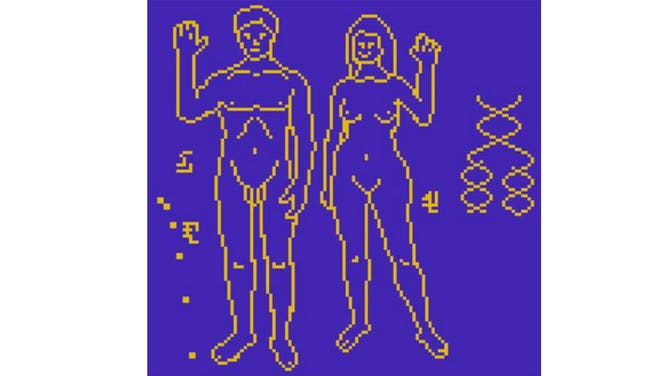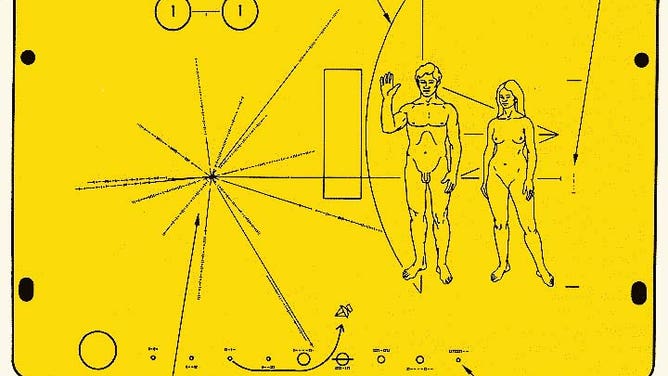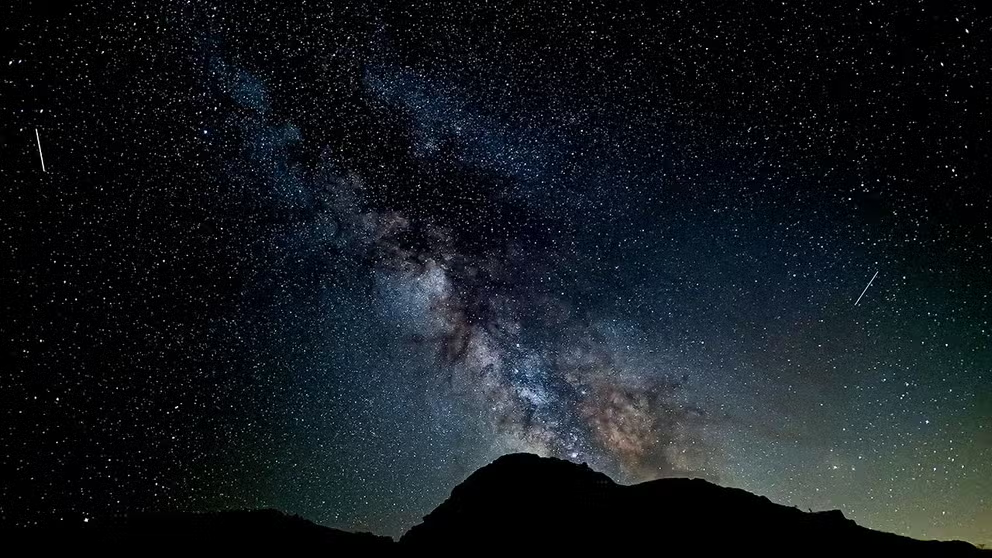Send nudes: Scientists propose broadcasting drawings of naked humans to ETs
This isn’t the first time we’ve sent illustrations of nude humans to space
Scientist explains Beacon in the Galaxy project
One of the lead scientists on a proposal to beam an updated "hello" message to possible extraterrestrial intelligences explains how it works.
Scientists have proposed broadcasting a "hello" message to possible extraterrestrial intelligence that would include, among other things, illustrations of naked human beings.
The proposal, titled, in part, "A Beacon in the Galaxy," was originally published in the scientific journal Galaxies in March. It aims to update the message that was originally broadcast from the Arecibo Observatory in the 1970s.
The updated message would use binary code, the language of computers, to relay basic mathematical and physical concepts to establish a means of communicating with any extraterrestrial civilizations that might receive it.

A map of Earth that is included in a proposed message to be broadcast to extraterrestrial intelligences.
(Galaxies 2022, 10(2), 55)
"Though the concept of mathematics in human terms is potentially unrecognizable to ETI, binary is likely universal across all intelligence," scientists wrote. "Binary is the simplest form of mathematics as it involves only two opposing states: zero and one, yes or no, black or white, mass or empty space. Hence, the transmission of the code as binary would very likely be understandable to all ETI and is the basis of the BITG message."
50-YEAR-OLD FROZEN MOON SAMPLES TO HELP NASA'S FUTURE MISSIONS
Included in the message would be binary-coded explanations of particle physics, the location of our solar system, a map of Earth and the most common elements found on our planet.
An illustration of human DNA and nude drawings of the male and female forms are also included.
"This page can easily be considered one of the most important parts of the message as a physical depiction of the senders of a cosmic message would certainly be of compelling interest," scientists wrote.

Illustrations of the human form that are part of a proposed message to be broadcast to extraterrestrial intelligences.
(Galaxies 2022, 10(2), 55)
It ends with an invitation to reply.
The message is designed to be broadcast to a selected region of our galaxy that is the most likely location for life to have developed. It can be sent from both the Allen Telescope Array in northern California and the Aperture Spherical Radio Telescope in China.
MEET THE MANIKINS THAT WILL HITCH A RIDE ON NASA’S MOON ROCKET
"These powerful new beacons, the successors to the Arecibo radio telescope which transmitted the 1974 message upon which this expanded communication is in part based, can carry forward Arecibo’s legacy into the 21st century with this equally well-constructed communication from Earth’s technological civilization," scientists wrote.
We've done it before
This isn’t the first time NASA has sent images out into the universe depicting humans in their most vulnerable state.
In 1972 and 1973, NASA launched the Pioneer 10 and 11 spacecraft which each carried a gold plaque engraved with information about where Earth is located in the Milky Way galaxy and a naked man and woman.

The images on the Pioneer spacecraft plaque. (Image: NASA)
(NASA)
The plaques were the idea of scientist Carl Sagan in case the spacecraft were intercepted by an alien civilization.
HOW TO WATCH FOX WEATHER ON YOUR TV
NASA took it a step further a few years later with the Voyager 1 and 2 spacecraft, which were the first to conduct a tour of our planets and the first to leave our solar system. Ahead of the launches in 1977, a committee led by Sagan selected images, sounds and messages to be placed on phonograph records and carried on the spacecraft. Known as The Golden Record, each record included instructions on how it could be played if it should be intercepted in space. More than 100 images were included on the Golden Record, including some showing human anatomy. These images included human sex organs, a fetus and humans at different stages in life from birth to old age.
To this day, both Voyager spacecraft continue to travel in opposite directions away from Earth in interstellar space.
